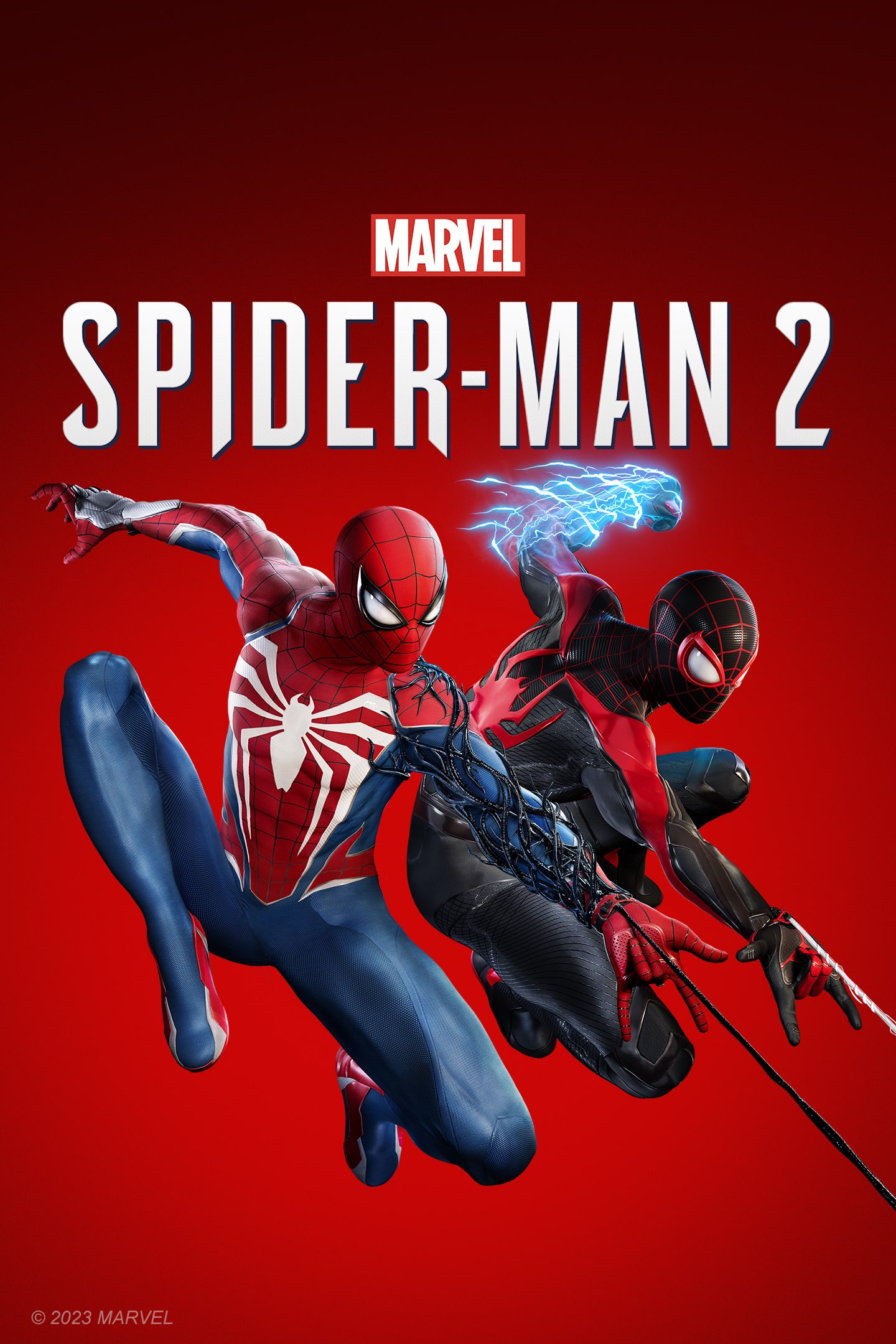Select Games to Compare
Far Cry Primal vs Marvel's Spider-Man 2
| close | close |
|---|---|
| shopping_cart Where to Buy | |
| info General Info | |
| Developer | |
| Ubisoft Montreal, Ubisoft Toronto, Ubisoft Kyiv, Ubisoft Shanghai | Insomniac Games |
| Publisher | |
| Ubisoft | Sony Interactive Entertainment |
| Genre | |
| Action-Adventure, Open World, Survival, Prehistoric | Action-Adventure, Open World, Superhero, Third-Person |
| Release Date | |
| 2016-02-23 | 2023-10-20 |
| star Key Features | |
| Key Specs | |
|
|
| Rating | |
| Mature 17+ | Teen |
| Star Rating | |
| 3.90 | 4.80 |
| sports_esports Gameplay | |
| Gameplay Overview | |
| The main post-launch content was the 'Wenja Pack,' which was part of the Digital Apex Edition and also sold separately. This included the 'Legend of the Mammoth' missions, the Blood Shasti Club, and the four enhancement packs. A Survivor Mode was added post-launch as a free update, offering a more challenging experience with permadeath options and increased difficulty. Other minor DLCs were typically cosmetic or resource packs. | Insomniac Games has released free updates including New Game+, new suits, mission replay, and accessibility features. Larger story DLC or expansions have not been officially announced as of mid-2024, but are a possibility based on past Insomniac titles. |
| Themes List | |
| The main post-launch content was the 'Wenja Pack,' which was part of the Digital Apex Edition and also sold separately. This included the 'Legend of the Mammoth' missions, the Blood Shasti Club, and the four enhancement packs. A Survivor Mode was added post-launch as a free update, offering a more challenging experience with permadeath options and increased difficulty. Other minor DLCs were typically cosmetic or resource packs. | Insomniac Games has released free updates including New Game+, new suits, mission replay, and accessibility features. Larger story DLC or expansions have not been officially announced as of mid-2024, but are a possibility based on past Insomniac titles. |
| settings_applications System Requirements | |
| 1080p - 1080p - Minimum (Likely 720p/Low or 1080p/Low ~30 FPS) | |
CPU: Intel Core i3-550 @ 3.2 GHz or AMD Phenom II X4 955 @ 3.2 GHz GPU: NVIDIA GeForce GTX 460 (1GB VRAM) or AMD Radeon HD 5770 (1GB VRAM) RAM: 4 GB | — |
| 1080p - 1080p - Recommended (1080p ~60 FPS, High Preset) | |
CPU: Intel Core i7-2600K @ 3.4 GHz or AMD FX-8350 @ 4.0 GHz or better GPU: NVIDIA GeForce GTX 780 (3GB VRAM) or AMD Radeon R9 280X (3GB VRAM) or better RAM: 8 GB | — |
| 1080p - Target_1080p_60FPS_High (Speculative PC) - Recommended (Estimated 1080p ~60 FPS, High Preset, Upscaling likely needed) | |
| — | CPU: Intel Core i7-9700K or AMD Ryzen 7 3700X (Estimated for PC) GPU: NVIDIA GeForce RTX 2070 Super (8GB) / RTX 3070 (8GB) or AMD Radeon RX 6700 XT (12GB) (Estimated for PC) RAM: 16 GB (32GB Recommended) |
| 1440p - 1440p - High (1440p ~60 FPS, High/Ultra Preset) | |
CPU: Intel Core i7-3770K @ 3.5 GHz or AMD FX-8350 Wraith @ 4.0 GHz or better GPU: NVIDIA GeForce GTX 970 (4GB) or AMD Radeon R9 390 (8GB) RAM: 8 GB (16 GB Recommended) | — |
| 1440p - Target_1440p_60FPS_High_Ultra (Speculative PC) - High Performance (Estimated 1440p ~60 FPS, High/Ultra Preset, Upscaling crucial) | |
| — | CPU: Intel Core i7-11700K or AMD Ryzen 7 5800X3D (Estimated for PC) GPU: NVIDIA GeForce RTX 3080 (10GB) / RTX 4070 Ti (12GB) or AMD Radeon RX 6900 XT (16GB) / RX 7900 XT (20GB) (Estimated for PC) RAM: 16 GB (32GB Strongly Recommended) |
| 4k - 2160p - Ultra 4K (~30-60 FPS, High/Ultra Preset) | |
CPU: Intel Core i7-4790K @ 4.0 GHz or AMD Ryzen 5 1600X @ 3.6 GHz or better GPU: NVIDIA GeForce GTX 980 Ti (6GB) / GTX 1070 (8GB) or AMD Radeon R9 Fury X (4GB) / RX 480 (8GB Crossfire for higher FPS) RAM: 8 GB (16 GB Recommended, 32GB for smoothest 4K with other apps) | — |
| 4k - Target_4K_60FPS_High_Ultra (Speculative PC) - Ultimate (Estimated 2160p/4K ~60 FPS, High/Ultra Preset, Aggressive Upscaling + Frame Gen Required) | |
| — | CPU: Intel Core i9-13900K or AMD Ryzen 9 7950X3D (Estimated for PC) GPU: NVIDIA GeForce RTX 4090 (24GB) or AMD Radeon RX 7900 XTX (24GB) (Estimated for PC) RAM: 32 GB |
| Other - DirectXRequirement | |
CPU: — GPU: — RAM: — | CPU: — GPU: — RAM: — |
| Other - LaptopConsiderations | |
CPU: — GPU: — RAM: — | CPU: — GPU: — RAM: — |
| Other - OptimizationNote | |
CPU: — GPU: — RAM: — | CPU: — GPU: — RAM: — |
laptop_chromebook Laptop Recommendations
Common Recommendations (Handles All Compared Games)
For Far Cry Primal Specifically
For Marvel's Spider-Man 2 Specifically
info_outline Laptop recommendations are estimates based on available component benchmarks and game requirements. Actual performance may vary depending on settings, drivers, cooling, power limits, etc. Prices and availability subject to change. As an Amazon Associate, we earn from qualifying purchases.
































